Modern & Contemporary: March 09
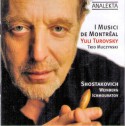 |
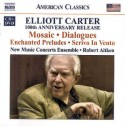 |
Click above Thumbnails to jump to review below.
 |
 |
Click above Thumbnails to jump to review below.
|
Late Beethoven - Commentary and Performance Luisa Guembes-Buchanan Del Aguia DA 55306 (www.beethovenpianoworks.com)
Although Beethoven lived to age 56, he wrote his last piano sonata at the age of 52 – a period when his everyday existence was marked by deteriorating health and total deafness. Nevertheless, he was still able to rise above the complexities of his daily existence, creating some of his finest music, where he pushed the boundaries of tonality and form as he never had before. This fine 6-disc set on the Del Aguila label featuring pianist/musicologist Luisa Guembas-Buchanan and cellist Philip Weihrauch is an examination of the products of Beethoven’s final years, taking as its premise that these late works have numerous stylistic qualities in common. And what a wealth of music is included! Not only are there five late piano sonatas (#28 through #32) but also the Diabelli Variations, 11 Bagatelles Op.119 and 6 Bagatelles Op.126, in addition to numerous smaller pieces all from the sketchbook, plus the two Cello Sonatas Op.102 – enough to keep a Beethoven connoisseur happy for weeks! I admit the name Luisa Guembas-Buchanan was not one familiar to me. Originally from Lima, Peru she studied in her native city at the Conservatorio National de Musica, and later at the Manhattan School of Music before concluding her studies at New York and Boston Universities. Since then, she has held teaching positions at Amherst College and the New England Conservatory, where she has assumed the dual role of musicologist and pianist perhaps not unlike that of Charles Rosen 40 years ago. The scholarly notes she provides in the attractive 60-page booklet are impressive (they are in both English and German and even contain end-notes), but there is certainly more to Ms. Gumbas-Buchanan than scholarship. To anyone who might initially dismiss this recording as an example of a musicologist who “also happens to play the piano”, this is clearly not the case! From the serene and reflective opening measures of the Sonata Op.101 to the bravura of the Diabelli Variations, Guembas-Buchanan demonstrates an effortless command of this demanding repertoire. Her playing is noble and majestic, coupled with a flawless technique - quite clearly an artist who not only performs admirably, but possesses a deep understanding of the music and is keen to share that knowledge with others. The two Cello Sonatas presented here, Op. 102 #1 and #2 were composed during the summer of 1814, the very beginning of Beethoven’s late period. Just as in the works for solo piano, Beethoven was also “pushing boundaries” through his use of counterpoint and extensive modulations. Together with cellist Philip Weihrauch, Guembas-Buchanan approaches the music with a bold assurance and both demonstrate a deep affinity for the music. The pleasure in this set is indeed two-fold – apart from the illuminating information provided, it is also great listening - a treat both for Beethoven scholars and those who simply love and admire the music of “the great mogul”. Richard Haskell |
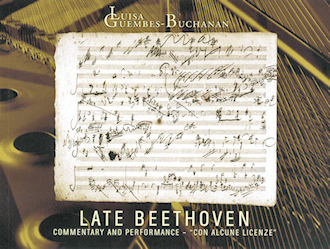 |
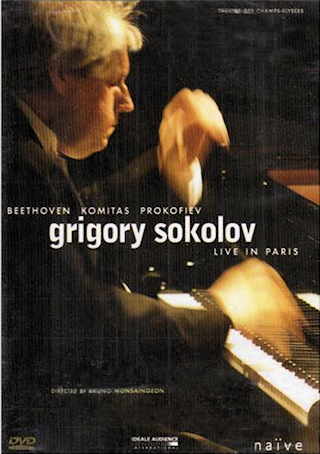 |
Grigory Sokolov – Live in Paris: Beethoven; Komitas; Prokofiev Directed by Bruno Monsaingeon Ideale-Audience DR 2109 AV 127 (www.ideale-audience.com)
If I mention the name Grigory Sokolov and you give me a blank stare, I wouldn’t be surprised. The reclusive Russian pianist, winner of the 1966 International Tchaikovsky Competition, regarded as a true successor to the giants, Gilels and Richter and who gives about 60 recitals a year to sold out houses in Europe, is almost unknown in North America. He hasn’t recorded much as he distrusts recordings unless they are made live and in one take. So this DVD is likely as close as you will get to seeing him live. The remarkable program starts off with 2 Beethoven early sonatas (Nos.9 & 10) played with an exquisite lyrical and romantic touch and a fine dynamic and emotional range. A more complex work, the Pastoral Sonata (No.15), is a true adventure especially the 2nd movement with its understated yet poignant ostinato staccato left hand and the beautifully shaded virtuoso Rondo finale. Sokolov’s phenomenal gift is getting inside the composer’s head and intuitively finding the right style although he never plays anything the same way twice. The 6 Armenian dances by Komitas that follow all sound similar yet different from one another. They are languid, soft, using exotic oriental rhythms to a mesmerizing, hypnotic effect. The final work is the monumental and fiendishly difficult Sonata No.7 by Prokofiev. The masterful interpretation winds up with ‘Precipitato’, a monstrous physical effort with an incessant toccata in steady ff and yet the pianist still manages to increase the crescendo to an overwhelming culmination. The ecstatic audience simply refuses to leave and Sokolov tirelessly keeps giving encores one after the other, five in all. Much more can be said, but let the music speak for itself. Janos Gardonyi |
Extended Play – CANADIAN STRINGS
By Terry Robbins
|
Three Sonatas for Violin and Piano - a mature work by Elgar, and early works by Richard Strauss and Ravel - are presented on an excellent disc by the Canadian duo Jonathan Crow and Paul Stewart on ATMA Classique (ACD2 2534). Elgar’s sonata, completed in September 1918, is a somewhat conservative piece that reflects the sombre effect on the composer of four years of the Great War. It has never really established a secure place in the repertoire, but is a work that really deserves to be heard more often. The Strauss sonata, written in 1887, is a passionate Romantic work clearly influenced by the chamber music of Brahms. The Ravel is an early single-movement work from 1897 that remained unknown until its discovery in manuscript many years after the composer’s death; its first public performance was in 1975. Crow, a Professor of Violin at McGill University and former concertmaster of the Montreal Symphony, plays with faultless intonation and a sweet, clear tone throughout. He has a sympathetic partner in Stewart, who is particularly outstanding in the Strauss. Recorded in Saint-Irenée, Quebec, the sound is excellent. |
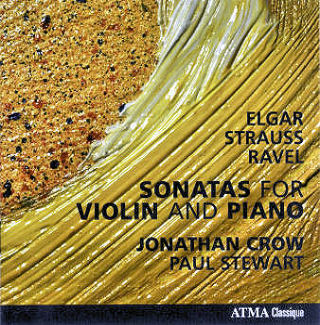 |
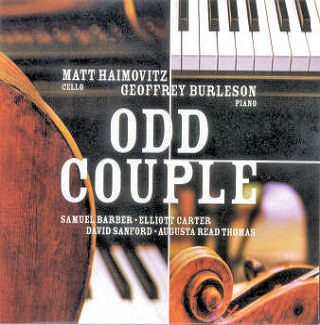 |
Odd Couple, the title of a new CD of American works from cellist Matt Haimovitz and pianist Geoffrey Burleson (Oxingale OX2015) is not a comment on the players; rather, it is taken from Matt Haimovitz’s description of the relationship between these two seemingly disparate instruments. Unsuitable partners they may be in some respects, but the music on this outstanding disc shows none of the weaknesses and all of the strengths that the cello and piano duo can display. The two central works are the sonatas by Samuel Barber and Elliott Carter, the former having its roots firmly in the Romantic tradition of the two Brahms sonatas, although firmly stamped with Barber’s own unmistakeable voice, and the latter, from 1948, harking back to the Beethoven sonatas in some respects while still looking ahead to Carter’s mature style. The opening and closing works are both world-premiere recordings: David Sanford’s 22 Part I from 1998 and Augusta Read Thomas’ Cantos for Slava, which was commissioned as part of an ASCAP award Haimovitz received in 2006, shortly after the death of Mstislav (“Slava”) Rostropovich. Thomas had worked closely with the great Russian cellist over the previous 15 years. The disc was recorded this past June at McGill’s Schulich School of Music, where Haimovitz is Professor of Cello. The sound quality is excellent, and both players are outstanding in difficult and challenging, but highly rewarding, repertoire. |
|
There are two recent CDs of the Bach Goldberg Variations in the string trio arrangement by the violinist Dmitri Sitkovetsky. On the firstthe abovementioned Jonathan Crow and Matt Haimovitz team up with violist Douglas McNabney (Oxingale OX2014); the other features Vancouver’s Trio Accord - Mary Sokol Brown (violin), Andrew Brown (viola) and Ariel Barnes (cello) (Skylark Music SKY0802). As McNabney points out, Bach’s music is strong enough to transcend the many transcriptions that have been made of this work; certainly this version, which Sitkovetsky dedicated to Glenn Gould, serves the predominantly three-part keyboard writing extremely well. There are many differences in tempo and track timings here, the latter probably due to the observance - or lack thereof - of repeats as much as anything, but both recordings are extremely satisfying performances. The playing is excellent on both CDs, both from an individual and ensemble viewpoint, and the recording ambience - both were recorded in a church - is warm and resonant. On first hearing I preferred the brightness and contrast in the Trio Accord CD, whereas the Quebec-based ensemble plays with a touch more legato throughout, but on further comparison I’m not so sure; in two outstanding recordings I have a feeling that it’s Jonathan Crow and friends who come closest to the spiritual heart of this astonishing work.
Terry Robbins
|
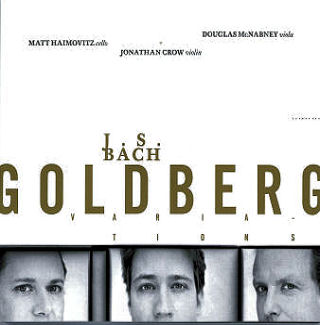 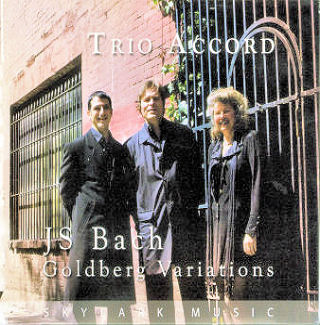 |
Six new recital discs from a variety of great operatic singers offer opportunities to hear them in a new light – in new repertoire, with different partners, or for the first time on a recital disc.
|
Phénix Les Poules ambiences magnétiques AM 176 CD Sampling everyday sounds while electronically mixing them with extended and unusual techniques; the Montreal-based Les Poules produces music that is both subtly feminist and sonically expressive. On their own, each of Les Poules (“the hens” in English) – alto saxophonist Joane Hétu, percussionist Danielle Palardy Roger and sampler-manipulator Diane Labrosse – also composes for dance and theatre companies and performs with such associates as guitarist Fred Frith (Roger); pianist Marilyn Lerner (Labrosse) and saxophonist Jean Derome (Hétu). Arriving at their second decade as a trio however, “Phénix” is an unbeatable demonstration of their interactive prowess. Over the course of 24 miniatures, lasting from barely a minute to slightly less than three, the trio creates unique juxtapositions that for example contrast the percussiveness of bass drum thumps and a sewing machine motor; or alternately compare approximations of infant cries, the power of a passing freight train and the rattling of a bell tree. Mostly narrowing her focus to timbres scraped and scratched on cymbals, Roger’s abrasions dovetail with the shrill reed bites, unattached mouthpiece peeps and wide-vibrato growls that Hétu forces from her horn. Meantime Labrosse’s ring-modulator flanging, droning loops of buzzing static and motor-driven grinding underline or connect the shifting tonal centres. With each woman vocalizing a babble of nonsense syllables, gargles, scat singing, snores and juicy quacking, the jocular result is as much musique de maison as musique concrète. In short Phénix is one hen party you’d be well-advised to attend. Ken Waxman Concert Note: Diane Labrosse will join Marilyn Lerner in “Seconde Nature” at The Music Gallery on February 20. |
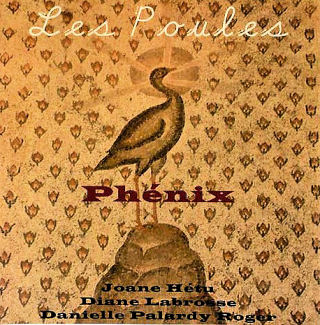 |
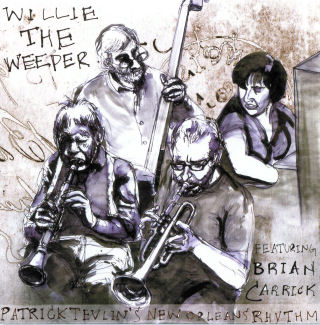 |
Willie the Weeper Patrick Tevlin’s New Orleans Rhythm New Orleans North CD-008 Some of the delights of any art form lie in the rich diversities to be found. Jazz has evolved into a multi-faceted sophisticated culture, but the simple joys of the music in its early form can still be heard, thanks to small, dedicated groups of musicians all over the world. This recording features three stalwarts of the Toronto traditional scene: Patrick Tevlin on trumpet, Roberta Hunt on piano and Colin Bray on bass, all of them members of the popular Toronto group, The Happy Pals. They are joined by Brian Carrick one of England’s leading New Orleans style clarinet players with a strong George Lewis influence. This music is unpretentious and sincere and, in truth, at its most enjoyable when heard live. That’s the case with any music, but none more so than traditional jazz with its direct emotional communication with the audience. That is not to detract from the listening pleasure to be found in this CD which is a collection of mostly familiar traditional themes like the title song, Willie The Weeper, I’m Confessin’ and Martha along with a few lesser known pieces such as the old rag, Trombonium, the 1924 Armand Piron Bright Star Blues and, adding a Jamaican touch, the 1925 Sly Mongoose. The musicians convey an infectious enthusiasm and lovers of traditional jazz will find much to enjoy in this recording. Jim Galloway |
Extended Play – LOCAL JAZZ
By Ori Dagan
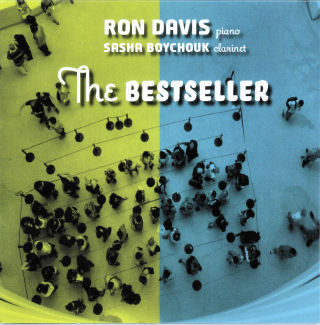 |
The artistry of Ron Davis is revealed not solely by his playfulness on the piano, but all the more by his creative decisions as leader. Davis has achieved critical acclaim for his pristine presentation of, and devotion to, the jazz tradition. On The Bestseller (Minerva/Davinor 233377), his sixth recording, he has pared it way down. Aside from two solo piano tracks, this is an entire album of piano/clarinet duets with Sasha Boychouk, a formidable Ukrainian musician who has recently relocated to Canada. Playing with remarkable virtuosity and a fine sense of humour, Boychouk is an ideal musical match for Davis. In addition to nine collaborative interludes, the original material is mostly penned by Davis, with several gems worth citing: Rhythmaron plants a fresh twist on the Gershwin standard I Got Rhythm, Allelujah is a luminous, pensive waltz and Street Stomp is the Klezmer answer to Dancing in the Streets. For good measure, a few covers, including the Sesame Street/Muppet Show anthem Manha Manha. Humorous, bold, engaging and energetic, “The Bestseller” is a sure-fire winner. (www.rondavismusic.com) |
| Known for his fiery tone and flair for burning tempi, Juno award winner Kirk MacDonald is one of Canada’s pre-eminent jazz saxophonists. Since the release of his first album nearly twenty years ago, MacDonald has gradually gravitated towards the strength of his own original compositions. Family Suite (Romhog Records 116), MacDonald’s sixth album as leader, is a personal affair. The poignant opening and closing theme, Dark Autumn, refers to the fall of 2002, an arduous time in which MacDonald lost his mother while still mourning the deaths of long-time collaborators Jerry Fuller and Joe Bendzsa. Each movement in the suite is meaningfully titled and dedicated. One of the liveliest, Four Shades of Light, features an electrifying tête-à-tête between the leader and Barry Romberg on drums, as well as Romberg trading fours with the exquisite Brian Dickinson on piano. Along with bassist Jim Vivian, the sensitive rhythm section is as good as it gets. Musically multifaceted as always, MacDonald delivers a highly rewarding, emotionally raw performance on this unquestionably cathartic recording. (www.kirkmacdonald.com) | 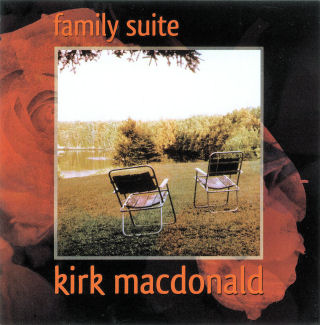 |
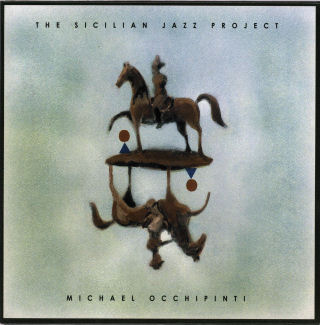 |
A first-rate guitarist, composer and arranger, Michael Occhipinti is best-known for co-leading the spirited NOJO (Neufeld-Occhipinti Jazz Orchestra) and has also previously released four titles under his own name. His 2000 release, “Creation Dream”, offered jazz renditions of Bruce Cockburn’s music. Conceptually similar, Occhipinti’s ambitious fifth outing The Sicilian Jazz Project (True North Records TND 516), pays tribute to his roots by reinventing traditional Sicilian folk repertoire. The selected material is tastefully steeped in jazz without sacrificing its authentic folk flavour. Occhipinti’s arrangements emphasize strings and percussion, along with Kevin Turcotte on trumpet, Louis Simao on accordion and Ernie Tollar on saxophone and flute. Five of the nine tracks feature heartfelt vocals by Dominic Mancuso and Maryem Tollar, both impeccable storytellers. Brother Roberto Occhipinti lays down the bass and wears the producer’s hat. Ultimately what comes through in this recording is a deep dedication to the material. Extensive liner notes effectively introduce the listener to each song’s meaning, origin and the leader’s intention. If one is of Sicilian lineage, this recording is essential; for everyone else, it is a recommendable labour of love. (www.michaelocchipinti.com) |
| The elder brother of Michael and a cousin of guitarist David, Roberto Occhipinti has enjoyed a productive career primarily as bassist, secondarily as producer. Initially mentored by Joel Quarrington and Dave Young, he spent decades as an orchestral player and sideman before releasing his first album as leader at the turn of the century. Occhipinti’s fourth release, A Bend in the River (Alma Records ACD11182), showcases his refined skills as player, producer, arranger and composer. The core personnel consists of pianist David Virelles, drummer Dafnis Prieto, Occhipinti on bass and Luis Deniz on alto saxophone. Collectively the group outlines each composition’s shape, but the canvas is splashed with many other colours, including guest appearances by flautist Les Allt, bass clarinettist John Johnson, trumpeter Kevin Turcotte and a full string orchestra on three of the seven cuts. The title track is a memorable standout for its logically flowing melody, sweeping harmonic movement and a rhythmically inventive saxophone solo by Deniz. Occhipinti’s string arrangements, especially those featuring the Globalis String Orchestra, create a lush lyricism that lingers long after the disc plays out. (www.robertoocchipinti.com) | 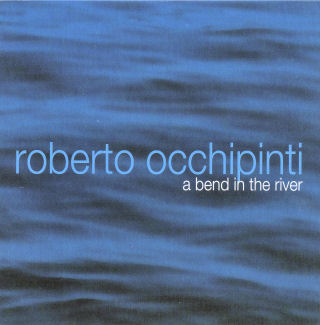 |
Extended play – VOCAL JAZZ
By Cathy Riches
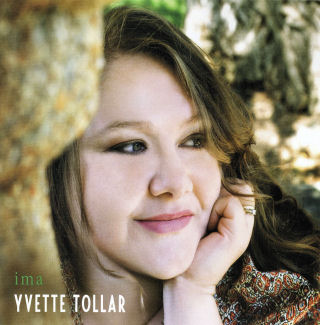 |
A passel of new discs by Canadian singers – some relative newcomers, others more experienced – ended off 2008 in style. The first, and most notable, is by Yvette Tollar, an independent release entitled Ima (ROM 10). The Tollar name may be familiar to some, as brother Ernie is an established woodwind player in Toronto who lends his talents to this collection of Canadian songs. Most are written by local players like keyboardist Dave Restivo (the gorgeous Prayer for Human Kindness appears twice on the disc, once with just piano accompaniment and the other with nimble tabla playing by Ravi Naimpally), guitar guru Kevin Breit and Tollar herself, but Joni Mitchell’s Edith and the Kingpin is also here and given a funky but reverential treatment. Tollar sings with a jazz sensibility underpinned with a gospel/soul sound that makes for a rich, appealing combination. But what is most compelling is her complete lack of affectation. She is a singer who has chosen and written songs that have a lot of meaning for her and while she takes care with her craft, it’s apparent her main aim is to get the songs across rather than to sound a certain way. Having some of the heaviest and most inventive players in Toronto collaborating on your disc helps too – the aforementioned Kevin Breit and Dave Restivo, piano player Robi Botos and Tollar’s husband and phenomenal bassist, Rich Brown, played and co-produced. It all adds up to one of the most genuine and moving discs from a local talent in 2008. (www.yvettetollar.com) |
| Montreal-based Susie Arioli and partner Jordan Officer have released their 5th CD Night Lights (Spectra Musique SPECD7806). Officer’s steady acoustic guitar comping and agile soloing along with Arioli’s light touch on snare, gives it a Hot Club of France sound, while the blend of sophisticated nostalgia and French and Latin tinges reminds me of the hip, Oregon-based “little orchestra” Pink Martini. The clever way that Arioli’s breathy alto is recorded — close-up, with no reverb — gives the songs an engaging intimacy, as if she’s sitting just over there on the couch doing a few numbers just for you. The phrasing is straight and unadorned on standards like I Can’t Get Started, Blue Skies and You Go to My Head with Officer’s original Basswalk (featuring bassist Bill Gossage) rounding out this breezy, satisfying record. Arioli and Officer are playing several dates in Quebec in February and March and info can be found at www.nuland.ca/arioli. | 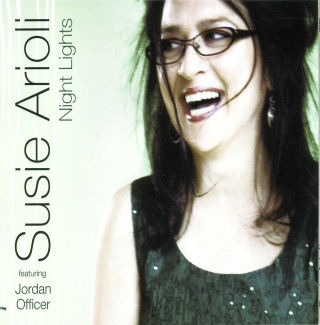 |
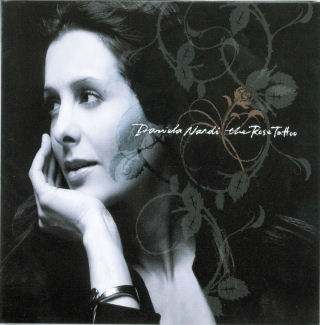 |
Daniela Nardi first graced the Toronto music scene with her personal songwriting style and smooth, earthy voice in 2003, but took a hiatus to nurse her mother through cancer. So it’s no surprise that her second CD Rose Tattoo (MIN003) is rife with self-examination and introspective lyrics. Produced by Greg Kavanagh, the disc is polished and richly arranged — lots of percussion, backing vocals, horns and subtle electronica — but never loses its earnest intensity. Rich Brown and George Koller share bass duties, Davide Direnzo drums and Nardi does the keyboard work. Ranging from the urban funkiness of 485 to the Calabrian folk singing that precedes the touching ballad Rosetta, to the Middle Eastern bluesiness of Longest Road, the record covers diverse musical and emotional ground. (www.danielanardi.com) |
| Two discs with similar offerings — standards played with traditional jazz treatments and instrumentation (no djembe or oud here) and straight forward vocal interpretations — round out the latest batch of releases. First is Molly Johnson’s Lucky (Universal 0251786014). Johnson is a popular singer in Toronto not only for her performances but also her fundraising work and, lately, radio hosting on CBC 2. Her mature, chesty voice imbues the songs on “Lucky” with a world-weariness that makes Lush Life and I Loves You Porgy utterly believable. While swingy, up-tempo treatments — courtesy of backing trio Phil Dwyer, piano and sax, Mike Downes, bass, and Mark McLean/Ben Riley, drums — take the normally sombre Mean to Me and Ode to Billie Joe (which could be renamed Ode to Killer Joe for the debt the arrangement owes to that song) to new, light-hearted places. (www.mollyjohnson.com) | 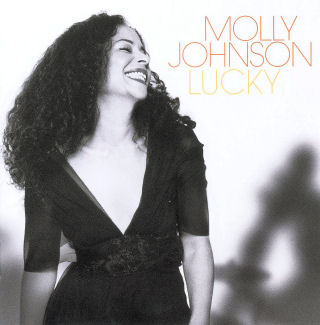 |
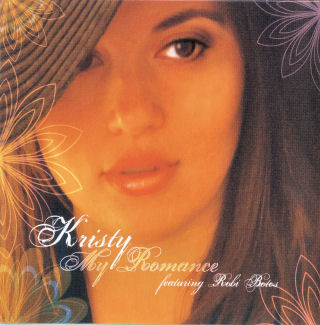 |
Founder of Alma Records and bass player, Peter Cardinali, produced his daughter Kristy’s debut My Romance (Alma Records ACD11082) and for it enlisted Robi Botos’ sensitive support on piano. Kristy croons her way matter-of-factly through such familiar tunes as I Remember You, Taking a Chance On Love and, incongruously for one of such tender years, In the Wee Small Hours of the Morning, with guest bits from renowns Don Thompson on bass, Guido Basso on flugelhorn and Kevin Breit on guitar. The standout track is the almost a capella version of A Sleeping Bee. Uber arranger Dylan Bell’s sumptuous, complex voicings, sung by fellow Cadence members Kevin Fox, Carl Berger and Ross Lynde, add a dash of verve to an otherwise straight forward record. (www.almarecords.com) |
By Ken Waxman
|
Barely four years since its founding, The Association of Improvising Musicians Toronto (AIMToronto), has raised the profile of local improvisers, while nurturing the scene. This almost 200-member, non-profit collective helps find venues in which to hear improvised music – most prominently Somewhere There in Parkdale – presents concerts featuring visiting musicians interacting with locals, and has organized a large improvisers orchestra. One of AIMToronto’s highest profile gigs took place at the Guelph Jazz Festival in 2007, where 18 AIMToronto members played the music of the American improv guru Anthony Braxton with the composer on soprano saxophone. The result was Creative Orchestra (Guelph) (Spool Line SPL 130). It showcases the AIMToronto members following the ever-shifting tonal centres in five Braxton compositions. Throughout these sequences and intervals it’s evident that overtones and undertones are as audible as the melodies, so the aural coloration takes on a 3-D-like effect. Germane to these tracks are the bravura contributions of vocalist Christine Duncan, who personifies the program not only with guttural or bel canto warbling plus inflated or truncated syllables, but also with parlando declarations. Another connecting thread is percussive – with strokes, vibrations and rattles apparent in varied pitches and pressures from Nick Fraser’s and Joe Sorbara’s drums and Brandon Valdivia’s clattering xylophone. Most characteristic of the pieces is Composition 307, a variation of sprechstimme, with Duncan’s falsetto dramatics sharing space with antiphonal vamps from the horns or gong-ringing and rim shots from the percussion. As the resonance arranges itself architecturally, slurs, syllables and sequences peep from the layering, with particularly noteworthy contributions from tenor saxophonist Colin Fisher, growls from Ronda Rindone’s clarinet and Scott Thomson’s shaggy trombone triplets. (www.spoolmusic.com) |
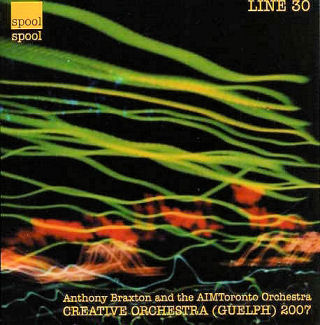 |
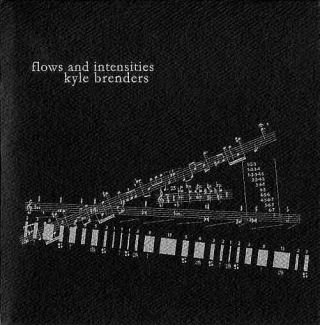 |
The Orchestra’s artistic director, saxophonist Kyle Brenders, studied with Anthony Braxton at Wesleyan University and his recording Flows and Intensities suggests one of Braxton’s solo outings. Each of the eight compositions – all but two by Brenders – is oriented around a specific theme or motif played on soprano or tenor saxophone. Working with extended reed techniques and circular breathing, the results are alternately pretty or gritty. Not conventionally “pretty” however, since the modus operandi involves chunky air blown through the horns’ body tubes, echoing ghost notes, adagio pitch-sliding plus extended meditative and undulating textures where audible air intake alternates with flutter tonguing. Repetition of selected clusters or tones are part of the strategy as are times where Brenders seems to be playing two parallel reed lines – one consisting of puffing notes, the other ornamenting them with ghost tones. (www.aimtoronto.org) |
| Another alumnus of the orchestra’s Guelph foray is guitarist Ken Aldcroft, whose solo guitar lexicon on VoCaBuLaRy (Trio Records TRP-SS01-008) is as varied as Brenders’ is for saxophone. Using diverse tunings, the guitarist’s distinctive flattish tone makes full use of flanging and reverb. Some tracks become exercises in controlled feedback, others are built around metallic micro tones and snapping flat picking. Sometimes his spiky runs reference Monkish licks; other times, loops, claw-hammer banjo tones or serrated rock-music extensions are present. Like Brenders he creates a call-and-response pattern as if a guitar duo is present. However his repeated phrases often fade into silences or transform themselves into patterns that form a combination of slack-key and microtonal slurs. These spidery, interlaced textures reverberating back onto one another are most accessible on Sterling Road Blues, which matches a non-showy blues progression that emphasizes the bass, with hesitant string-clumping, finally downshifting into ringing, but not reverberating timbres. (www.kenaldcroft.com) | 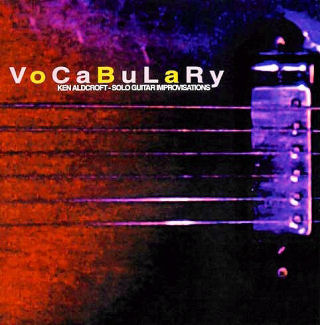 |
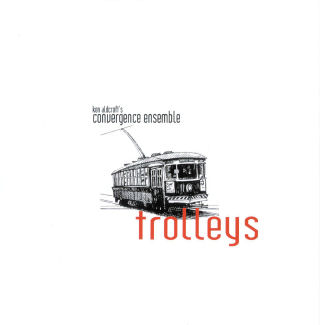 |
Bringing this game plan to group improv, Trolleys (Trio Records TRP-009) finds Aldcroft’s Convergence Ensemble meandering between group and solo work. Trombonist Thomson, alto saxophonist Evan Shaw, drummer Joe Sorbara and bassist Wes Neal join Aldcroft here for an outing where pauses are as much a part of the sound as polyphony, though there are points at which disconnect is evident between soloists and band. Individually each player impresses, especially Sorbara with drum stick nerve beats, thick ruffs and distinct hi-hat bops; Shaw, who undulates accentuated lines with a wide vibrato and snorting obbligatos; plus Thomson’s tongue-blurring plunger work and staccato grace notes. At points the trombonist’s blustery braying corrals the others into a bluesy stop-time amble which moves forward for a period until all the players disperse on individual paths. A rubato near-ballad, Apples showcases the most co-operation, involving multilayered counterpoint from each player. Shaw’s irregularly shaped reed osculation makes common cause with Aldcroft’s rhythmically sophisticated echoing fills, while walking bass propels the intersection of burbling trombone runs and ringing guitar licks. Before the climax, Sorbara gooses the tempo as the piece speedily double then triples in time, adding discursive riffs from Thomson and Shaw. Impressive as part of an orchestra, AIMToronto members are just as estimable individually. |
WORLDS OF MUSIC IN TORONTO
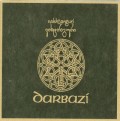 |
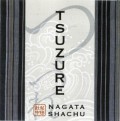 |
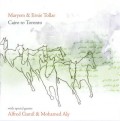 |
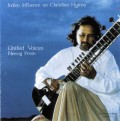 |
Click the above covers to jump to the reviews below.
|
The Hidden Heart is a DVD of a 2001 TV documentary by Jake Martin concerning Benjamin Britten, his compositions and his relationship with Peter Pears (EMI 50999 21657191). Following the immediate success of Peter Grimes in 1945, Britten was acclaimed and music lovers around the world waited for his next opera. Then came The Rape of Lucretia in 1946, Albert Herring in 1947 and The Beggar’s Opera in 1948. The relationship between the composer and his tenor was no secret but it was against the law in Britain in those days. “The Hidden Heart” leads us through their lives to the last opera, Death in Venice. Some of their private correspondence is read and it is their last words which close this exceptionally well fashioned appreciation of their special relationship. Film clips of Britten, the operas, rehearsals, and many new and archival videos around The War Requiem are featured in this memorable presentation. Get It. |
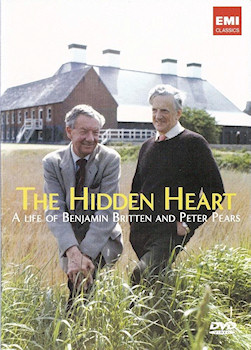 |
|
A recent Britten- Pears DVD from the BBC archives (DECCA 0743257) contains a formal Winterreise produced by John Culshaw in 1970 with Britten accompanying off-stage and also three of the songs filmed in rehearsals at home. Many of Britten’s arrangements of folk songs are heard in a recital before a select audience in 1946. For me, these little songs were worth the price of the disc... The Foggy Foggy Dew; The Ploughboy; O Waly, Waly; Oliver Cromwell; and many others. Oh, by the way... Decca has assembled their Britten recordings into several packages: Operas, volume 1 on 8CDs (4756020): Operas, volume 2 on 10CDs (4756029): Choral works on 10CDs (4656040); and a mainly instrumental collection of 7CDs (4756051). Check out the contents with your dealer or on the Decca site at http://www.deccaclassics.com. |
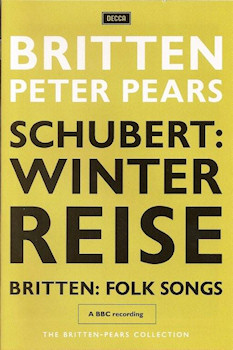 |
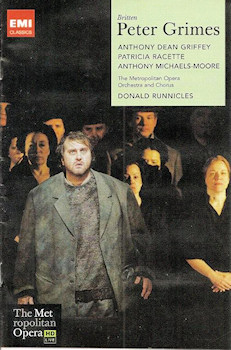 |
Last year’s MET production of Peter Grimes, as seen live in high definition on movie screens around the world, is available on an EMI DVD exactly as seen live, plus interviews and behind the scenes activities (EMI 509921 741494, 2 DVDs). Donald Runnicles conducts with Anthony Dean Giffey perfectly cast as the unfortunate Grimes. Watching at home is quite an experience, arguably better than sitting in the opera house, especially with the (optional) English subtitles to clarify the text. |
|
Among the foremost violin exponents of the 20th Century, Christian Ferras (France 1933-1982) holds a special place. He had a rather short career but while his playing was well in the league of the superstars of the era, Heifetz, Oistrakh and Francescatti, he suffered from severe depression which eventually led him to end his life. His achievements from an early age were so sensational that EMI placed him in their top line-up along with Menuhin and Oistrakh. His success was such that the powerhouse DGG picked him to assume the top position on their roster. In short time he recorded the four most popular concertos of the repertoire, Tchaikovsky, Brahms, Beethoven and Sibelius with Karajan and his Berlin Philharmonic. These marvellous recordings remained in the active catalogue for over forty years. DOREMI’s 2cd set of four live concerto performances from Paris confirms his place in the violinists’ pantheon (DHR-7880/1). The Mendelssohn E minor (1965) is beautifully communicative; Tchaikovsky (1968) impassioned; Mozart K.219 (1955) pure and stylistic while Jean Martinon’s intriguing, post-Berg 2nd concerto (1968) is brilliant. Derived from recently discovered pristine radio archives, this is an attractive collection. |
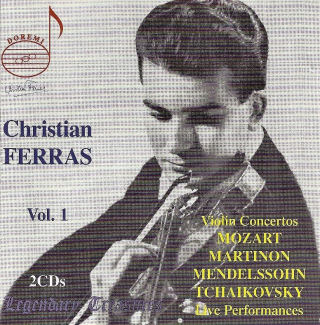 |
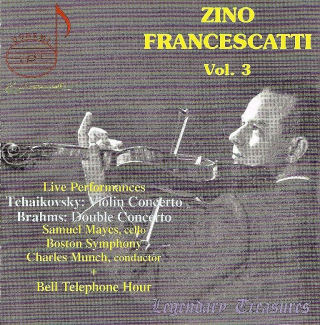 |
The illustrious Zino Francescatti (France 1902-1981) had a totally different kind of career and personal life. For more than half a century he was a frequent and favourite guest of almost every important orchestra in the world. We know him from his many Columbia recordings with the New York, Philadelphia and Cleveland orchestras but none with Boston, with whom he often performed. DOREMI has corrected this in Volume 3 of their Francescatti discs (DHR-7888) with Charles Munch conducting the Tchaikovsky (1958, stereo) and Brahms Double (1956) with first chair cellist Samuel Mayes. Hear Francescatti in his prime and his distinctive sonority and characteristic artistry. I have reservations about the sound but the three bonus tracks from The Bell Telephone Hour of 1952 are very good.
|
|
Silvia Marcovici (Romania b.1952) had a sparkling career during the last three decades of the century. Lesser known than the above, judging from these live performances she well deserved prime billing on a major label but was only heard on a number of lesser ones, except for the Sibelius on BIS and the Glazunov with Stokowski on Decca. Marcovici’s complete mastery of the instrument is amply conveyed playing seven concertos in the new DOREMI set (DHR-7942-4) containing 2 CDs and a DVD. Her characteristic sensitivity and warmth illuminate the Tchaikovsky, Brahms, Beethoven, and Saint-Saëns No.3 on the CD. On the DVD she plays Lalo, the Bruch no.1 and the Bartok 2nd to perfection, made all the more enjoyable by her striking, charismatic stage presence.
|
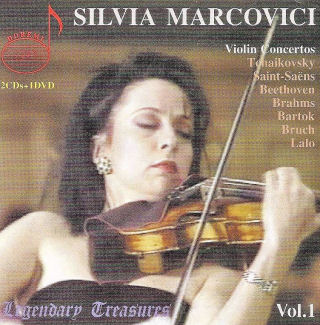 |
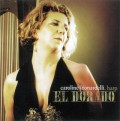 |
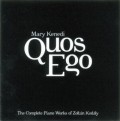 |
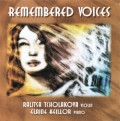 |
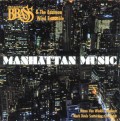 |
Click above thumbnails to jump to reviews below.
|
Caroline Leonardelli Centaur Classics CEN1021 Ottawa-based harpist Caroline Léonardelli’s fourth album to date offers an enticing mix of old and new: a program of beloved French standards by Debussy, Tournier and Damase book-ended by compositions by Canada’s leading composer for the harp. Devising convincing music for the so-called “naked piano” involves technical and conceptual challenges exasperating enough to discourage many a composer. Marjan Mozetich, however, composes in a style ideally suited for the instrument and has contributed greatly to its repertoire. His El Dorado was commissioned in 1981 for harpist Erica Goodman by Toronto’s New Music Concerts and was followed by several further works for the instrument. There is a pronounced minimalist influence detectable in the evocative oscillations of Mozetich’s early works which have since given way to a more supple and idyllic approach. Originally scored with string orchestra and formerly available on a now deleted CBC recording of the premiere performance, El Dorado is admirably revived here in a budget-conscious arrangement featuring the Penderecki String Quartet and double bassist Joel Quarrington. The album also features the third (!) recording of Mozetich’s 1988 cycle of four solo pieces, Song of Nymphs, in an exceptionally scintillating performance. Among the French solo pieces placed between these Canadian works Marcel Tournier’s Féerie stands out for its rhapsodic and dramatic sweep, a welcome antidote to the comparative bucolic placidity of its neighbours. The recording boasts outstanding sound engineered by celebrity tonmeister Anton Kwiatkowski. Daniel Foley |
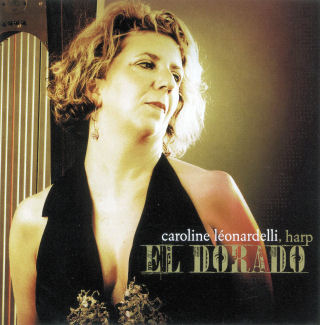 |
|
Ralitsa Tcholakova; Elaine Keillor Carleton Sound CSCD-1012 As a violin and piano recording, this one is immediately evident as being at the top of the genre. Performers are first rate, and playing with a passion. Audio production is unusually well done, with none of the bizarre qualities one finds so often nowadays, either of the violinist sounding as if she is larger than the accompanist, or the listener being right inside the piano. Excellent choices were made for the music on this CD, with special emphasis on Bulgarian iconic figure Pantcho Vladiguerov, who is represented by the Chant from his larger Bulgarian Suite, the widely-known Rhapsody Vardar, a Humoreske, plus an encore arrangement of Dinicu’s Hora Staccato. Tcholakova and Keillor show an admirable commitment to Canadian repertoire, beginning with Gena Branscombe’s unjustly neglected A minor Sonata, well represented in this performance. Violet Archer’s Fantasy and Prelude and the Prelude and Allegro are equally well served. But the best is saved for last: we get to hear the violin version of the late Patrick Cardy’s Liessel, Suse, Ilze, and Gerda, and Mary Gardiner’s monumental Remembered Voices, here finally blossoming in a hall vastly superior to the Heliconian Club. The Glenn Gould Studio’s hand-picked Steinway is on its best behaviour. No fewer than three sound engineers did the microphone wizardry. All photos are posed, with none showing the actual recording sessions. An excellent CD. John S. Gray |
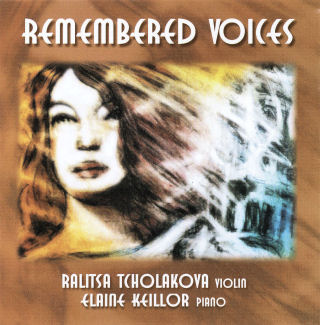 |
a
|
|
James Ehnes ONYX 4038 David Fulton has spent years assembling an astonishing collection of instruments by the great Cremonese makers, and Canadian violinist James Ehnes has selected nine violins - 6 Stradivari, 2 Guarneri ‘del Gesu’ and a Pietro Guarneri - and three violas for a dazzling recital programme designed to showcase the specific qualities of each instrument. Several, like the 1709 Stradivari ‘La Pucelle’, have never been recorded before, and one - the 1715 Stradivari ‘Marsick’ - has been Ehnes’ concert instrument since 1999. Seven different bows from Fulton’s equally superb collection of bows by Tourte and Peccatte were used in the recording, each hand-picked to complement the strengths of the particular instrument. In addition to a CD, the ONYX release includes a 100-minute DVD which features the entire 21-piece CD recital, with Ehnes describing the instrument and its qualities before each track, plus selection options and a 30-minute Extras chapter that includes the audio comparison tracks from the CD and extended commentary clips by Ehnes and Fulton. Ehnes hardly moves when he plays, but the close-up camerawork still manages to make it difficult to see exactly what he’s doing at times, especially his deceptively effortless bowing. The filming of the instruments is beautiful, though, and Ehnes is in spectacular form, with the opening track, Bazzini’s La Ronde des Lutins, worth the price of the set on its own. The violinist remarks in his outstanding booklet notes that “the difference in tone between instruments is often very subtle indeed”, especially when it’s the same player, of course, and it will take a professional ear to identify significant differences between the instruments. Still, a wonderful record of a remarkable project. Terry Robbins |
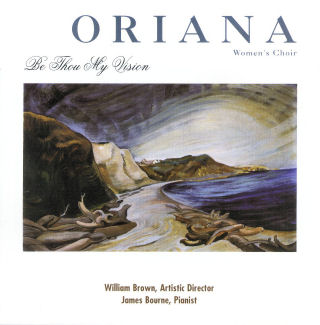 |
Oriana Women’s Choir; William Brown Independent WRC8-8072 While this fifth recording by Oriana consists of popular hymns, anthems and psalm settings, it is a treat to hear them set for women’s voices with six new arrangements commissioned by the choir by John Beckwith, Eleanor Daley, Derek Holman, Leonard Enns, Jon Washburn and Ruth Watson Henderson. Added to the stellar list of Canadian composers represented on this CD are psalm settings by Srul Irving Glick, two of which are sung in Hebrew. The women’s voices blend superbly and this repertoire is performed with skilful beauty thanks to the direction of William Brown, with expert accompaniment by James Bourne on piano or Michael Bloss on organ. Two absolute gems stand out on this recording: Fairest Lord Jesus arranged by Leonard Enns and All Things Bright and Beautiful in an arrangement by Mack Wilberg. Both employ the services of Leslie Newman, flute and Clare Scholtz, oboe with parts creatively interwoven through the fabric of these well-known melodies. Add to that the light-hearted There’s a Little Wheel A-Turnin’ in my Heart (arr. Robert A. Harris) and a heartfelt Kumbaya (arr. Paul Sjolund) at the end of the recording; this is an offering sure to inspire the spirit. Dianne Wells |
|
Bartoli; Flórez; D’Arcangelo; Orchestra La Scintilla; Alessandro De Marchi Decca 478 1084 The raison d’être of any recording of Bellini’s La Sonnambula, one of the most charming bel canto operas, is a great coloratura soprano. This recording offers something different – a great coloratura mezzo. Cecilia Bartoli is a remarkable singer, commanding a huge range, stunning agility, and overwhelming dramatic inclinations. But her idiosyncratic mannerisms – excessive breathiness, quiet cooing noises, heavily aspirated coloratura – are cloying, especially when she is allowed to indulge in them as often as here. While she makes great efforts to lighten and soften her voice, her rich mezzo with its tightly-wound vibrato is the wrong colour for the sleepwalking Amina. And transposing three scenes down to accommodate her lower range makes the recording more about Bartoli than Bellini. No transpositions are needed for tenor Juan Diego Flórez, who gives one of the finest performances of Elvino on record. Flórez sails through this difficult part with accuracy and élan, confirming his reputation as the finest bel canto tenor on stage today. Ildebrando D’Arcangelo gives a warm, commanding performance as Rodolfo, though the smaller roles are taken by singers of lesser talents. The Orchestra La Scintilla of the Zurich Opera House provides authentic period instrument accompaniment, and is beautifully conducted by Alessandro De Marchi. Though there is much here to enjoy, those looking for a recording of the opera in modern sound would be better off with Natalie Dessay in the title role on a recent Virgin Records release. Seth Estrin Concert Note: Orchestra La Scintilla accompanies Cecilia Bartoli in a program celebrating the life and art of the great 19th century opera singer Maria Malibran, a superstar of her era and inspiration for such composers as Rossini and Donizetti, at Roy Thomson Hall on March 1. |
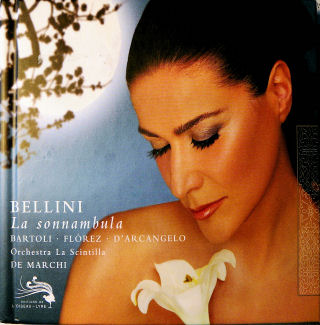 |